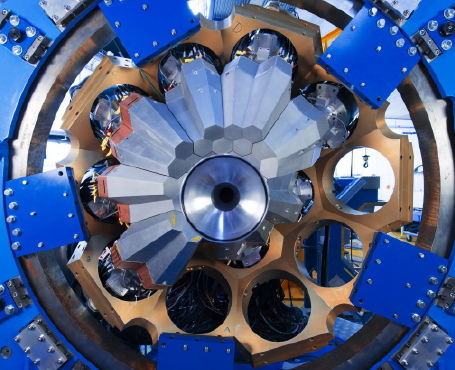L’équipe Matière Nucléaire étudie la structure des noyaux atomiques à travers notamment la détection des photons gamma émis par ces derniers. Ces recherches nous permettent de mieux connaître la matière qui nous entoure ainsi que les éléments exotiques impliqués en particulier dans certains phénomènes astrophysique.
Au cœur de la matière qui nous entoure, les noyaux atomiques sont des objets microscopiques mais complexes. Les nucléons qui les constituent sont liés par l’interaction fondamentale nucléaire forte, et suivent les lois de la physique quantique. Ainsi, un noyau peut se trouver dans différents états selon la répartition et le mouvement des nucléons. Au-delà de l’état fondamental – de plus basse énergie – il existe une multitude d’états excités. Les propriétés de ces états dépendent de l’interaction forte, et de la façon dont un système composite y réagit.
Nous utilisons la détection de rayonnement gamma – bien plus énergétique que la lumière visible – émis lorsqu’un noyau se désexcite : cette technique expérimentale permet d’étudier les états reliés par de telles transitions. Dans ce cadre, nous sommes impliqués dans le développement de nouveaux détecteurs gamma, plus efficaces et de haute résolution. Ces progrès sont indispensables pour l’étude des noyaux dits exotiques : ces noyaux, très instables, ne peuvent être produits qu’en faibles quantités. Bien qu’absents sur Terre, ils sont impliqués dans les processus astrophysiques, notamment les supernovæ, qui ont permis la production des noyaux constituant la matière ordinaire. L’étude de ces processus de nucléosynthèse fait aussi partie de nos activités.
